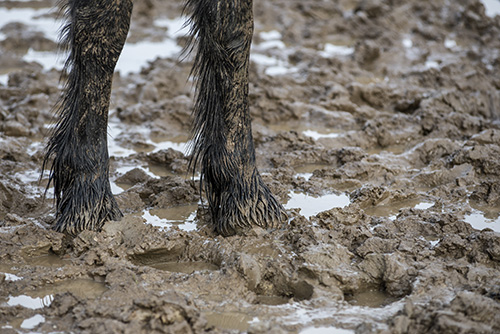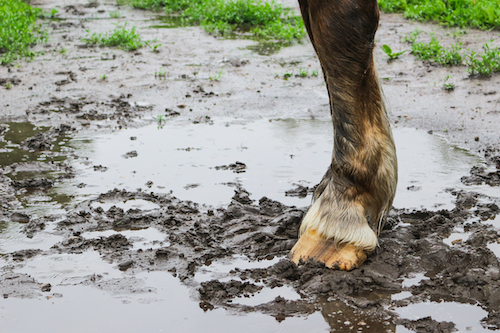We all want to avoid it… especially if taking care of a horse that lives outside, and during winter times… Today, we are talking about mud fever!
Do you know everything there’s to know about this disease?
Today, let’s review some of the key points.
What exactly is pastern dermatitis?
Commonly called mud fever, pastern dermatitis is a group of diseases caused by a bacterium: Dermatophilus congolensis.
This one particularly thrives in wet environment, such as mud.

How do I know that my horse has mud fever?
The dermatitis is characterized by a emergence of skin crusts on the horse’s affected areas.
Those are often pasterns, but it also does sometimes happen that the back and the withers get impacted.
The crusts hide a ulcerative lesion. The wound’s neighboring area is often warm, congested, and painful when touched, and can cause lameness if located on the pasterns.
These symptoms can also be related to other conditions. That is why it is sometimes necessary to call your vet and do an analysis of an affected tissues’ sample; in order to make sure that mud fever really is the origin of the issue.
How do we get rid of it?
It is mandatory to get your horse far away from the issue factor. Most times, it is the wet environment. You might thus want to favor a dry and nonabrasive environment. Thoroughly clean and disinfect the area on a daily basis (one to two times per day).
If you have any doubt in the process or feel you need guidance, follow your veterinary’s advice.
Can I avoid it?
As soon as the first signs of wetness come in the year, you can start to carefully monitor the risky areas, clean them, and most importantly dry them before getting your horse back in the field for instance.
You can eventually apply a rich cream in thick layers as a preventive action, by ensuring to clean it at each grooming session.
Note that some horses are more prone to developing this type of issues (such as greys).
Thank you for reading,
Lilas









